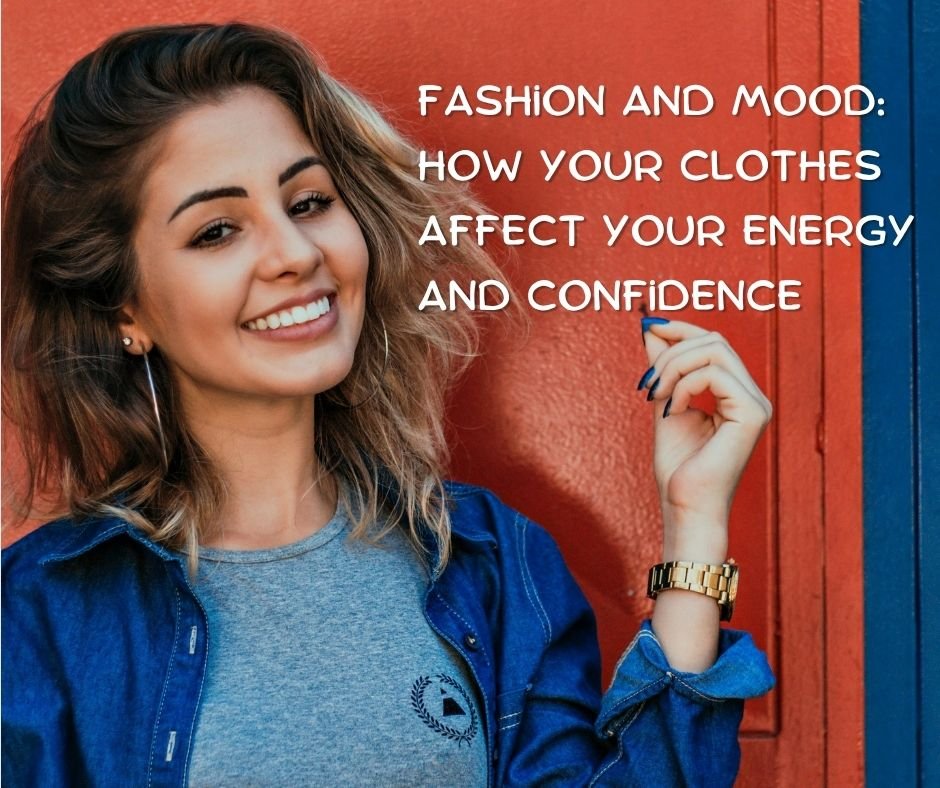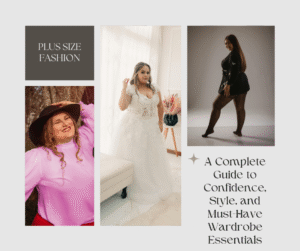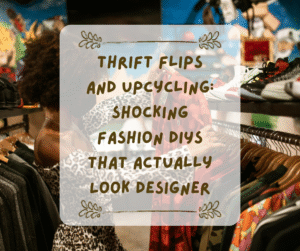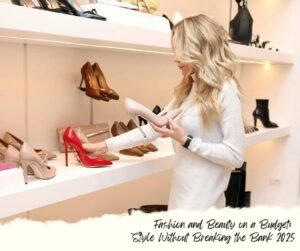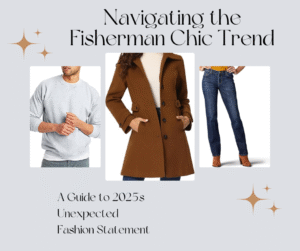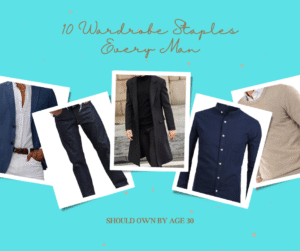This post may contain affiliate links. I may receive compensation if you sign up for or purchase any products through the links below. As an Amazon Associate and affiliate marketer for many other businesses, I earn from qualifying purchases. Please read my disclosure for more information.
The intricate relationship between fashion and mood has garnered significant interest in recent years, as more individuals recognize how their clothing choices can influence their emotional well-being. Fashion is not merely a matter of aesthetics; it plays a critical role in shaping our self-perception and how we navigate the world around us. Our clothing choices can affect our energy levels, confidence, and overall mental health, intertwining the psychological effects of style with everyday life.
Research suggests that specific styles, colors, and fabrics can elicit various emotional responses. For instance, wearing bright colors or bold patterns may enhance one’s mood, while more muted tones can evoke feelings of calm or introspection. Light and soft fabrics often create a feeling of comfort and relaxation, whereas structured materials may instill a sense of confidence and empowerment. Thus, the emotional connection with clothing extends beyond personal preference, influencing our daily interactions and experiences.
Understanding how fashion impacts mood allows individuals to make more informed choices about their wardrobes. By honing in on styles that resonate positively with their emotions, people can consciously curate outfits that uplift them and improve their overall outlook. This awareness can lead to significant changes in energy levels and self-esteem, contributing to a more positive self-image. The clothing we wear can serve as a powerful tool for self-expression, enabling us to communicate our identities and emotions effectively.
In essence, fashion serves as more than a superficial concern; it is a complex interplay between personal expression, emotional state, and social perception. Recognizing this connection encourages a deeper appreciation for the choices we make in our attire and their broader implications for our mental health and well-being.
The Psychology of Color in Fashion
Color plays a significant role in fashion, serving as a powerful tool that can evoke various emotions and influence our moods. The psychological effects of color are deeply rooted in our experiences and cultural associations, making the choice of clothing hue an impactful decision. For instance, wearing red is often linked to feelings of passion and excitement; it signifies confidence and power. This is why individuals who wish to portray assertiveness frequently opt for this vibrant color.
Conversely, blue is associated with calmness and serenity. When worn, it can create a sense of tranquility not only for the wearer but also for those around. This calming effect may enhance the confidence of the person wearing it, particularly in situations requiring calmness and composure, such as public speaking or attending formal events. Green, symbolizing growth and harmony, can evoke a feeling of renewal and balance, making it a popular choice for individuals seeking stability and reassurance.
On the other hand, lighter colors like yellow can energize and uplift spirits, promoting a cheerful demeanor. However, excessive use of bright yellows may overwhelm some, hence balance is key. Similarly, darker shades, such as black and charcoal, can project sophistication and elegance, yet they may also convey a sense of heaviness or seriousness, potentially impacting how the wearer feels throughout the day.
Importantly, the perception of color is not solely subjective; social contexts and cultural background also shape how different colors are interpreted. Understanding these psychological associations can empower individuals to curate their wardrobe in ways that enhance their mood and confidence. Choosing the right colors can create a positive internal experience and significantly alter the external perceptions of others, creating an intricate interplay between personal energy and social interaction.
The Impact of Fabric and Fit on Confidence
The relationship between clothing and personal confidence is deeply influenced by the fabric and fit of garments. The texture of the fabric can evoke distinct feelings and reactions, significantly impacting an individual’s comfort level. Soft, breathable materials such as cotton or linen often provide a sense of luxury and ease, enhancing one’s overall confidence. When a person feels at ease in their attire, they are likely to carry themselves with a more positive posture, which is reflected in their self-esteem and energy levels.
Additionally, the fit of clothing plays a crucial role in how an individual perceives themselves. Well-tailored garments that complement the body shape can boost confidence remarkably. Tailored pieces tend to create a polished appearance, allowing wearers to command presence and respect in various social settings. Conversely, ill-fitting clothing, whether it is overly tight or excessively loose, often leads to discomfort and self-consciousness. Such distractions can diminish a person’s focus, detracting from their overall performance and interactions in both professional and personal environments.
The ability to move freely and comfortably in one’s clothing correlates strongly with confidence levels. When clothes fit appropriately, individuals are less likely to be preoccupied with adjusting or worrying about how they look, allowing them to engage more fully in their experiences. Therefore, investing in quality fabrics and proper tailoring can lead to a significant enhancement in self-image and overall mood. Ultimately, the clothes we wear serve as more than mere fabric; they shape our daily experiences and influence how we present ourselves to the world.

Dress for the Occasion: How Situational Dressing Affects Mood
Choosing the right outfit for a specific occasion is a critical factor that can significantly influence an individual’s mood and confidence. The concept of situational dressing emphasizes the importance of dressing appropriately based on the context, which plays a vital role in how individuals perceive themselves and are perceived by others. This awareness of the dress code not only fosters a sense of belonging but also enhances personal energy and self-esteem.
For instance, in a professional setting, wearing formal attire such as a tailored suit or a classic dress can instill a sense of authority and competence. Such outfits not only align with workplace expectations but also reflect a commitment to professionalism. By visualizing oneself in an appropriate professional outfit, individuals may feel more prepared and motivated to engage in their tasks, ultimately boosting their overall productivity. In contrast, casual settings often invite comfort and relaxation through clothing choices that allow for greater personal expression, such as stylish jeans paired with a casual shirt. This approach can contribute to a more laid-back atmosphere, enabling individuals to feel at ease in social situations.
Conversely, dressing inappropriately for an occasion can lead to discomfort and potentially diminish confidence. For example, wearing overly casual attire to a formal event might provoke feelings of insecurity and self-doubt, overshadowing the opportunity for enjoyment and positive interaction. It is crucial to remain cognizant of the expected dress code and select outfits that harmonize with the occasion. By doing so, individuals can cultivate an environment where mood and confidence are elevated, allowing for more fulfilled and engaging experiences.
Influence of Personal Style on Self-Expression
Personal style serves as a vital conduit for self-expression, allowing individuals to communicate their identities, moods, and beliefs through their clothing choices. Fashion is not merely a superficial aspect of our lives; instead, it forms a significant part of who we are and how we wish to be perceived by others. When individuals curate a wardrobe that resonates with their authentic selves, they often experience heightened confidence and a more positive mood. This connection between personal style and emotional well-being is increasingly recognized within contemporary discussions about mental health and self-identity.
Embracing one’s unique fashion sense is crucial in fostering a genuine representation of self. Authenticity in fashion choices can enhance overall self-esteem, as it allows individuals to feel aligned with their inner values and beliefs. The act of selecting clothing that truly reflects one’s personality—whether through bold colors, distinctive patterns, or eclectic accessories—can create a sense of empowerment. Subsequently, this empowerment can elevate mood, creating a positive feedback loop where improved self-image leads to higher energy levels and motivation.
Furthermore, the interplay between personal style and cultural influences can enrich one’s wardrobe with diverse expressions of identity. Engaging with various styles—like streetwear, vintage, or minimalist aesthetics—can assist individuals in discovering what best suits them. The journey of understanding personal style may require experimentation, but it ultimately reinforces an individual’s sense of self. Moreover, when individuals dress in a manner that feels authentic, they often evoke confidence not only in themselves but also in how others perceive them.
In summary, personal style is a powerful extension of self-expression that reflects individual identity. By embracing authenticity in fashion choices, individuals can significantly impact their confidence and mood, ultimately enhancing their overall well-being.
The Social Aspect: Fashion, Mood, and Community
Fashion plays a crucial role not only in individual expression but also in the social dynamics of communities. The way people dress can reflect and even shape social interactions, influencing both mood and confidence levels. Fashion trends often emerge from cultural environments, and these trends can greatly affect how individuals perceive themselves and are perceived by others in social settings.
Peer influence is a significant factor in shaping fashion choices. Clothes can serve as indicators of social status, acceptance, and belonging. When individuals see their friends or social circles embracing specific styles or trends, they may feel prompted to adopt similar fashions to fit in. This collective participation often boosts confidence, allowing individuals to feel a sense of connection with their peers. However, this can also pose challenges, as some may feel pressured to conform to trends that do not resonate with their personal style, potentially affecting their mood negatively.
Furthermore, social media has intensified the impact that fashion can have on mood and self-esteem. Platforms such as Instagram and TikTok provide spaces where users showcase their outfits, often curating their images to highlight the latest trends. This exposure can lead to a heightened sense of awareness regarding personal style, influencing how individuals feel about their choices. While social media can inspire creativity and innovation in fashion, it can also foster feelings of inadequacy when individuals compare their appearance to those presented online. The continuous loop of likes, shares, and comments creates a unique blend of support and pressure that can significantly affect a person’s self-esteem.
In understanding the social aspect of fashion, it is evident that both community dynamics and social influence play intricate roles in shaping one’s mood and confidence. How individuals relate to their clothing within social contexts can either uplift or diminish their sense of self, revealing the powerful connections between fashion, mood, and community engagement.
Mood-Boosting Fashion Habits
Developing mood-boosting fashion habits involves a conscious effort to create a wardrobe that resonates with positivity and self-expression. One effective approach is to establish a collection of clothing that sparks joy. This may involve evaluating your current wardrobe and identifying pieces that evoke happiness, confidence, or a sense of comfort. Consider incorporating vibrant colors and patterns, as these elements are known to enhance mood and provide an energetic boost throughout the day. Moreover, a well-organized wardrobe allows for easier access to your favorite outfits, further promoting a positive attitude towards dressing each day.
Regularly updating your clothing is another significant aspect of cultivating positive fashion habits. As seasons change and personal styles evolve, maintaining a fresh wardrobe can reignite excitement and enthusiasm around fashion. This doesn’t necessarily entail purchasing new items frequently; rather, it can involve swapping clothing with friends, visiting thrift stores, or simply reinventing and tailoring your existing pieces. Each refresh offers an opportunity to rediscover your style and reestablish a connection with your clothing, ultimately resulting in an uplifted mood.
Experimentation with new styles also plays a crucial role in boosting mood through fashion. Trying out different silhouettes, textures, and accessories can lead to unexpected and delightful discoveries. Attend fashion workshops, stay updated with the latest trends, or simply observe how others style their outfits to inspire your own creativity. Embrace the idea that fashion is a personal expression, and stepping out of your comfort zone may lead to a newfound sense of confidence and energy. By actively participating in fashion experimentation, you not only redefine your appearance but also foster a deeper relationship with your wardrobe, promoting a more positive and fulfilled mood.
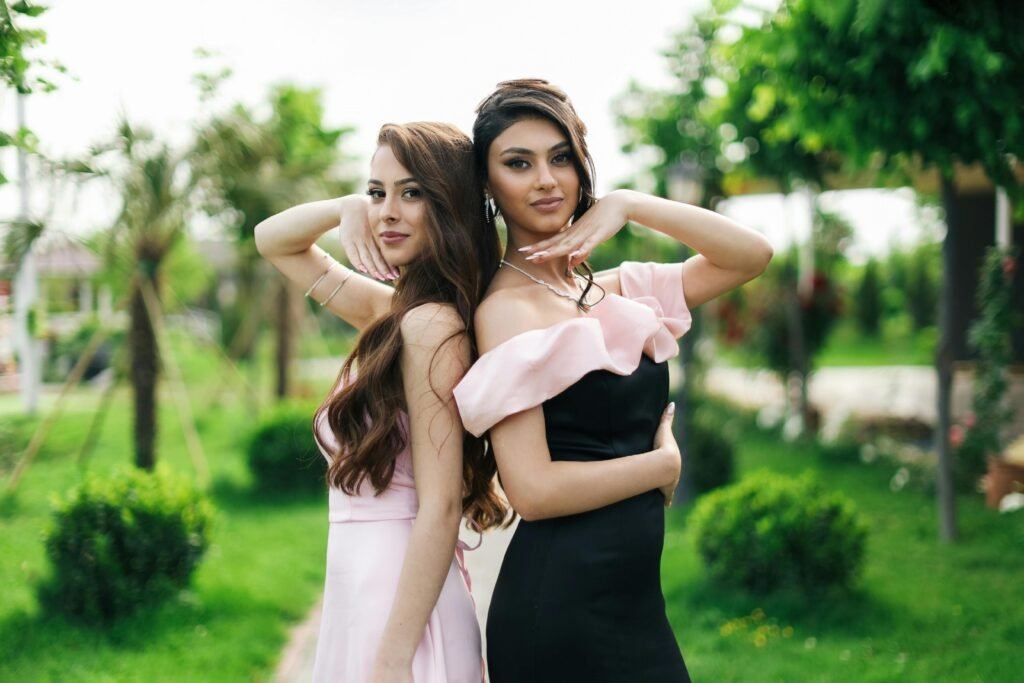
Real-Life Stories: Fashion Transformations and Confidence
The relationship between fashion and personal confidence can be profound, as demonstrated by numerous individual experiences. For instance, consider the story of Sarah, a young professional who struggled for years with feelings of inadequacy and self-doubt. After a period of wearing unremarkable clothing that failed to express her true self, she decided to revamp her wardrobe. By investing in clothes that resonated with her personality—bright, flowing dresses and tailored blazers—she noticed a significant shift in her mood. Sarah reported feeling instantly more vibrant and self-assured, as if her clothing had unlocked a hidden potential. Her confidence blossomed, leading her to seek new opportunities in her career and social life.
Another compelling example is that of James, a college student who previously dressed in oversized, casual attire that contributed to a feeling of invisibility. After a chance encounter with a fashion consultant, he learned the power of well-fitted clothing and developed an understanding of color coordination. By incorporating items that complemented his body shape and style, James found himself not only attracting more positive attention but also acknowledging his worth. His grades began to improve, and he became more involved socially, thanks to the newfound confidence his wardrobe provided.
Equally inspiring is the case of Maria, a stay-at-home mother who had largely prioritized practicality over personal expression. Feeling disconnected from her identity, she decided to dedicate time to her appearance by selecting outfits that made her feel beautiful and empowered. Transitioning from basic tees to vibrant hues and flattering silhouettes reignited her sense of self-worth. As a result, Maria reported a remarkable enhancement in her emotional well-being; she began approaching each day with enthusiasm and positivity, contributing to a healthier family dynamic.
Conclusion: Embracing Fashion as a Tool for Well-Being
In the exploration of the relationship between fashion and mood, it becomes evident that the clothes we wear significantly influence our emotional state and self-perception. Throughout this discourse, we have examined how specific styles, colors, and overall choices contribute not only to our outer appearance but also to our inner well-being. This interconnectedness encourages individuals to consider their clothing as more than mere fabric but as a powerful instrument that can uplift spirits and enhance confidence.
By selecting outfits that reflect personal identity and resonate positively with one’s mood, individuals are empowered to harness the psychological effects of fashion. For instance, wearing vibrant colors may evoke feelings of joy and vitality, while tailored fits can instill a sense of professionalism and self-assuredness. Moreover, the choice of fabrics and patterns can evoke comfort, allowing wearers to feel at ease and confident in their environments.
Moreover, understanding the circumstances under which certain clothing styles can impact mood enhances our ability to make conscious fashion choices. Whether dressing for a significant occasion or a casual day at home, being mindful about our wardrobe can help us navigate daily challenges with greater resilience. In doing so, fashion transcends superficial aesthetics and emerges as a vital element in our pursuit of holistic well-being.
Therefore, as we embrace fashion as a valuable tool for enhancing both mood and confidence, it is crucial to remain aware of its potential influence on our mental and emotional health. By making thoughtful choices in our apparel, we can cultivate an empowering wardrobe that supports our energy and reinforces our self-confidence, ultimately contributing to a more fulfilled and energized life.

